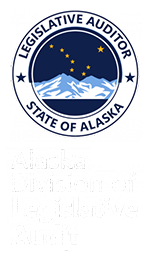| SUMMARY OF: | A Sunset Review of the Department of Commerce, Community, and Economic Development, Board of Chiropractic Examiners, September 26, 2005. |
Purpose of the Report
In accordance with Title 24 and Title 44 of the Alaska Statutes (sunset legislation), we have reviewed the activities of the Board of Chiropractic Examiners (board). As required by state law, the legislative committees of reference are to consider this report when considering whether to extend the termination date for the board.
Report Conclusions
In our opinion, the Board of Chiropractic Examiners is operating in the public’s best interest and should continue to regulate chiropractors. Except as noted in the paragraph below, the board serves a public purpose and has demonstrated an ability to conduct its business in a satisfactory manner. The board continues to propose changes to regulations to improve its effectiveness and ensure that chiropractors are licensed in the State of Alaska.
Outside of the licensing and examination functions, the board has been ineffective in serving the interest of the public. Too much of the board’s time is spent discussing and developing statutory and regulatory changes that will have little to no impact on the public, but instead benefit the profession. Discussion topics include school sports physicals and independent medical examinations.
Alaska Statute 08.03.010(c)(5) requires that the Board of Chiropractic Examiners be terminated on June 30, 2006. Under AS 08.03.020, the board has a one-year period to administratively conclude its affairs. We recommend that the legislature extend the board’s termination date until June 30, 2014.
Findings and Recommendations
Recommendation No. 1
The board should improve the efficiency of its operations by ensuring board meeting discussions are limited to topics within its purview and are of benefit to the public overall.
The efficiency of the board is hindered by its misaimed efforts. The board repeatedly discusses topics outside of its purview, which has resulted in wasted time, increased costs, and more meetings than necessary each year. In an effort to improve board efficiency, we recommend the following:
- Limit agenda discussion items; exclude topics outside of chiropractic examiners’ jurisdiction.In recent years, the board spent an inordinate amount of time discussing topics that would best be left to state or national chiropractic organizations. Agenda items repeatedly discussed included the regulation of independent medical examinations (IME) and the performance of school sports physicals. From August 2000 through January 2005, the board conducted 17 meetings. IMEs were discussed at 14 of the 17 meetings; school sports physicals were discussed at 9 of the meetings. These discussions have continued over time because the board believes regulation of these areas is within its jurisdiction.A 1991 attorney general (AG) opinion explicitly states that chiropractors are not statutorily authorized to perform school sport physicals. An AG’s opinion relating to the chiropractic regulation of IMEs does not exist. On several occasion, however, the board has been informed by Department of Law (DOL) staff that they do not have statutory authority to regulate IMEs. Further, DOL staff have informed the board that legislative changes are necessary before chiropractic examiners can regulate IMEs and before they can perform school sports physicals.
- Reduce the number of board meetings held each year.As discussed above, the board spends a large amount of time repeatedly discussing items outside of its purview, as authorized in statute, resulting in increased operational costs. Specific increased costs include: contractual costs for DOL expertise; personal services costs for Division of Corporations, Business and Professional Licensing staff services; and board meeting costs.
We recommend that the board improve its operational efficiency by ensuring meeting discussions are limited to topics within its purview and are of benefit to the public overall. Additionally, we recommend that the board decrease the number of meetings held each year from three to two, in an effort to reduce operational costs.

